- 1School of Petroleum Engineering, China University of Petroleum (East China), Qingdao, China
- 2Key Laboratory of Unconventional Oil & Gas Development (China University of Petroleum (East China)), Ministry of Education, Qingdao, China
A Corrigendum on
Mechanism of long-term strength retrogression of silica-enriched Portland cement assessed by quantitative X-ray diffraction analysis
by Qin J, Pang X, Li H and Zhang Z (2022). Front. Mater. 9:982192. doi: 10.3389/fmats.2022.982192
In the original article, there were some errors in Figures 4, 8–11 as published. The tobermorite contents of sample 90d-FS-1 and sample 90d-FS-2 were plugged incorrectly in the line plots (Figure 8 and Figure 11). The mass absorption coefficient (MAC) was not corrected when calculating the phase compositions of the sample 180d-FS-1 (Figures 4, 8–11). The corrected Figures 4, 8–11 and their captions appear below.
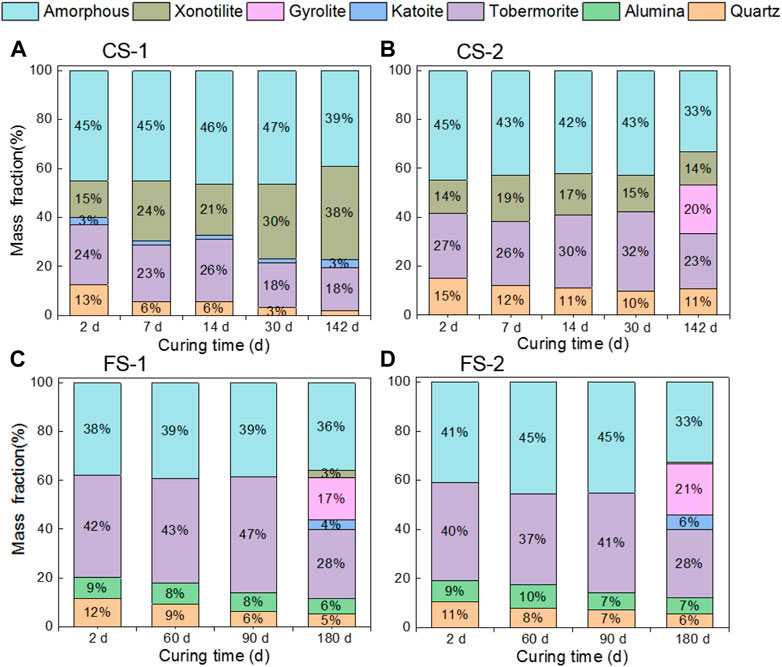
FIGURE 4. (A–D) Phase compositions of hydrated cement quantified using the external standard method at various curing times.
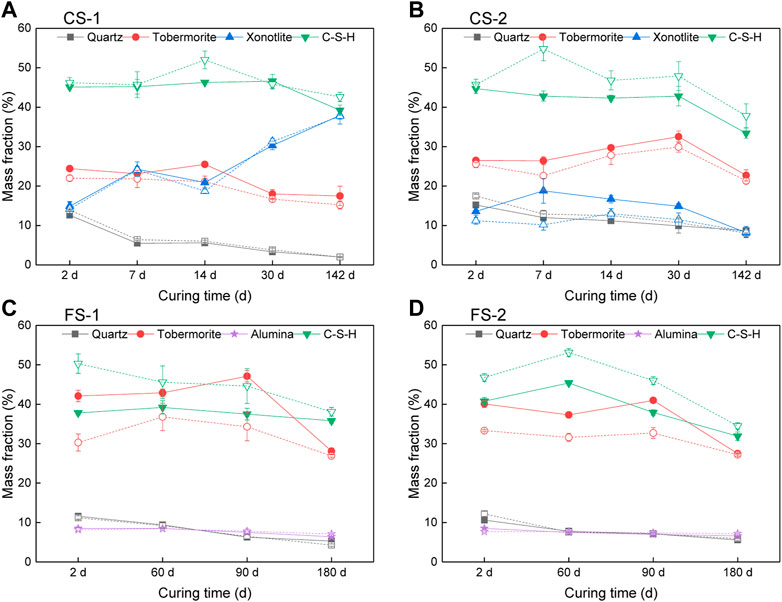
FIGURE 8. Quantitative X-ray diffraction analysis of hydrated cement using the external standard method (filled symbols linked by solid curves) and the PONKCS method (hollow symbols linked by dash curves). (A) slurry CS-1 (B) slurry CS-2 (C) slurry FS-1 (D) slurry FS-2.
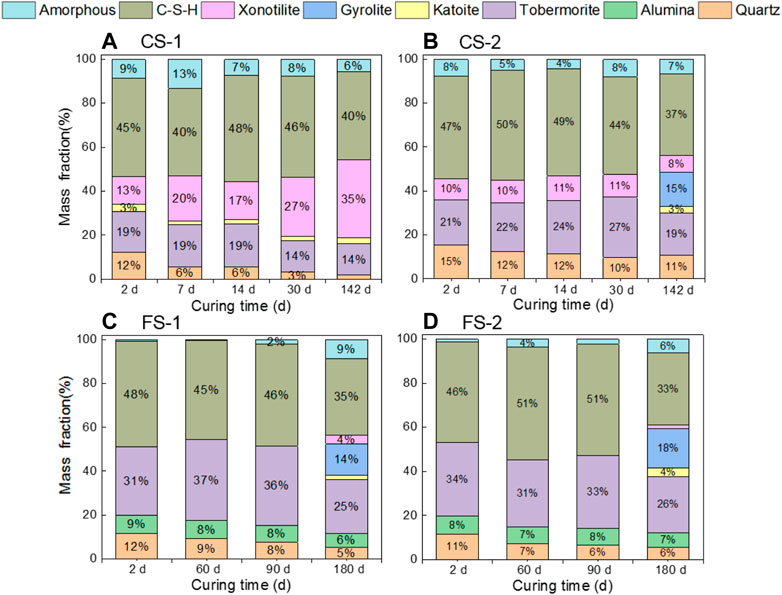
FIGURE 9. (A–D) Phase compositions of hydrated cement quantified using the hybrid method at various curing times.
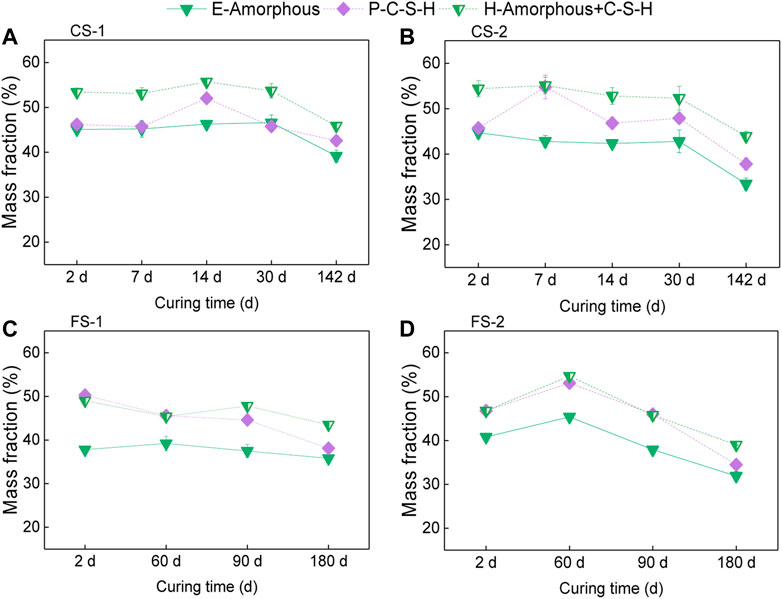
FIGURE 10. Comparison of the amorphous phase content obtained by different methods. (E: the external standard method; P: the PONKCS methods; H: the hybrid method). (A) slurry CS-1 (B) slurry CS-2 (C) slurry FS-1 (D) slurry FS-2.
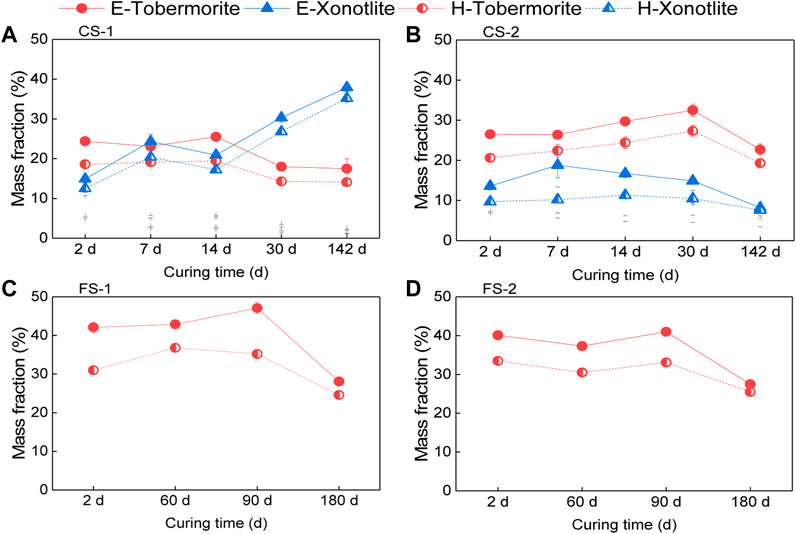
FIGURE 11. Comparison of the crystalline phase contents obtained by different methods. (E: the external standard method; P: the PONKCS methods; H: the hybrid method). (A) slurry CS-1 (B) slurry CS-2 (C) slurry FS-1 (D) slurry FS-2.
The authors apologize for these errors and state that this does not change the scientific conclusions of the article in any way because these changes are relatively small. The original article has been updated.
Publisher’s note
All claims expressed in this article are solely those of the authors and do not necessarily represent those of their affiliated organizations, or those of the publisher, the editors and the reviewers. Any product that may be evaluated in this article, or claim that may be made by its manufacturer, is not guaranteed or endorsed by the publisher.
Keywords: quantitative X-ray diffraction analysis, external standard, partial or no known crystal structure, strength retrogression, oil well cement
Citation: Qin J, Pang X, Li H and Zhang Z (2022) Corrigendum: Mechanism of long-term strength retrogression of silica-enriched Portland cement assessed by quantitative X-ray diffraction analysis. Front. Mater. 9:1101881. doi: 10.3389/fmats.2022.1101881
Received: 18 November 2022; Accepted: 30 November 2022;
Published: 16 December 2022.
Approved by:
Frontiers Editorial Office, Frontiers Media SA, SwitzerlandCopyright © 2022 Qin, Pang, Li and Zhang. This is an open-access article distributed under the terms of the Creative Commons Attribution License (CC BY). The use, distribution or reproduction in other forums is permitted, provided the original author(s) and the copyright owner(s) are credited and that the original publication in this journal is cited, in accordance with accepted academic practice. No use, distribution or reproduction is permitted which does not comply with these terms.
*Correspondence: Xueyu Pang, eC5wYW5nQHVwYy5lZHUuY24=
 Jiankun Qin
Jiankun Qin Xueyu Pang
Xueyu Pang Hailong Li1
Hailong Li1